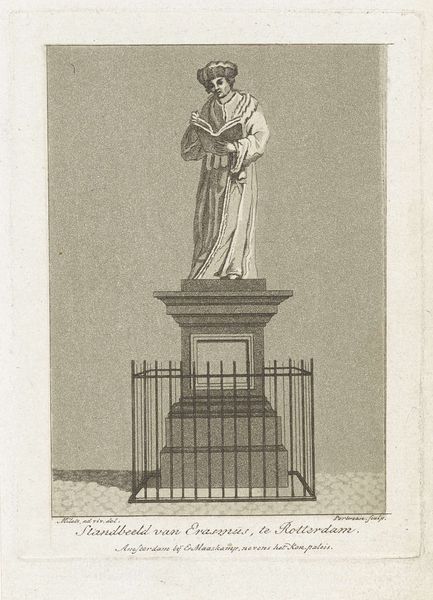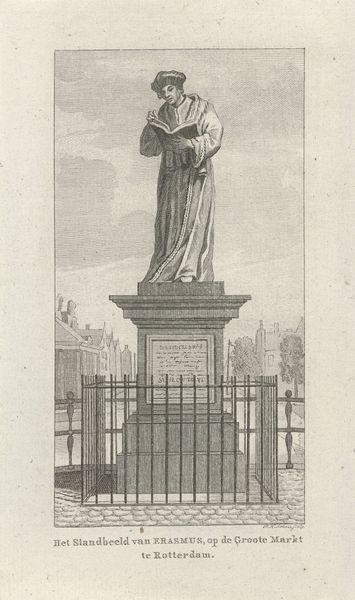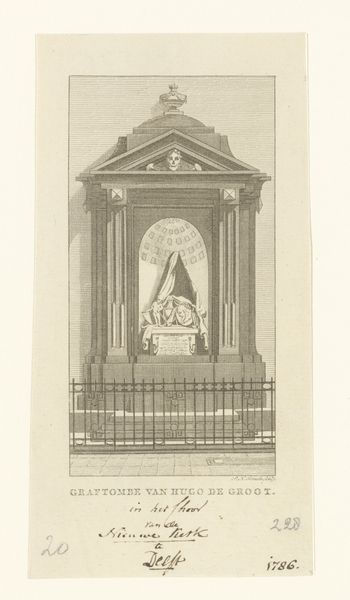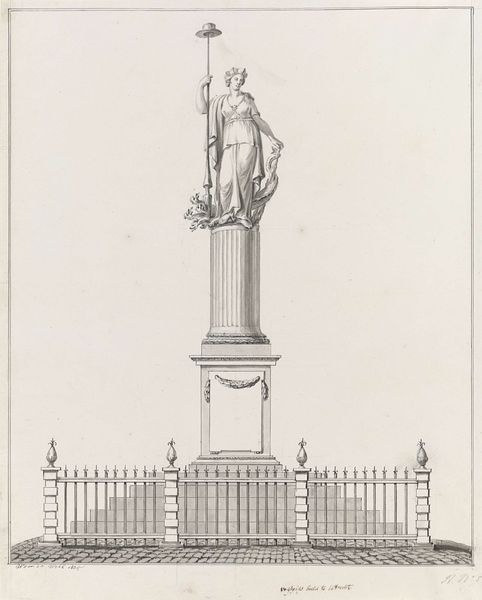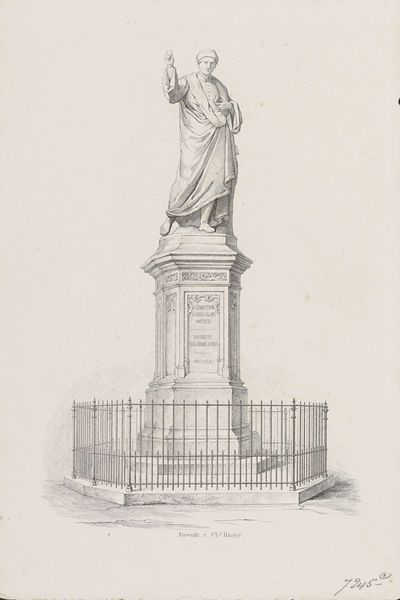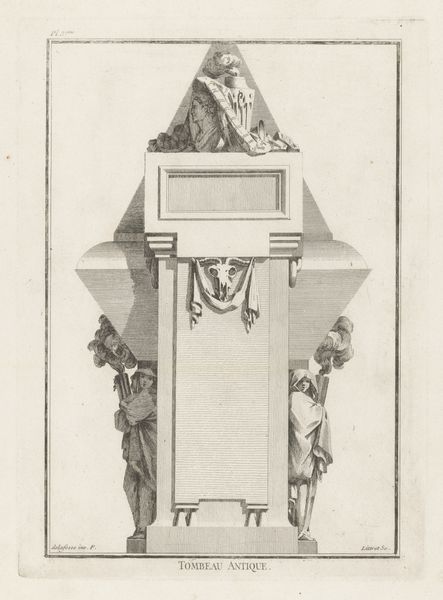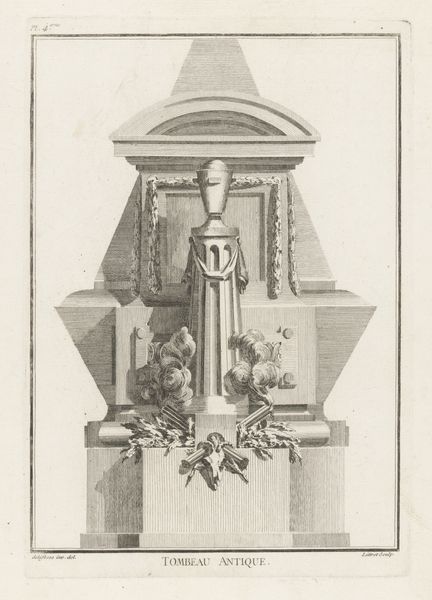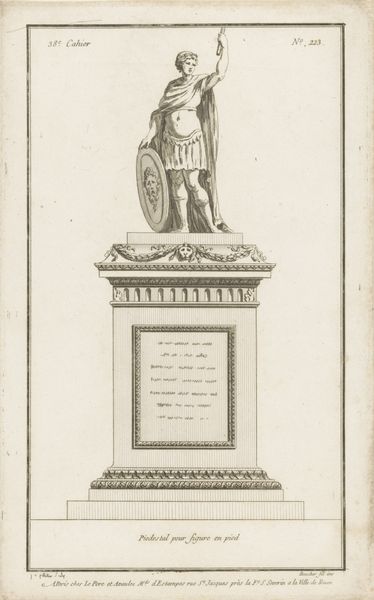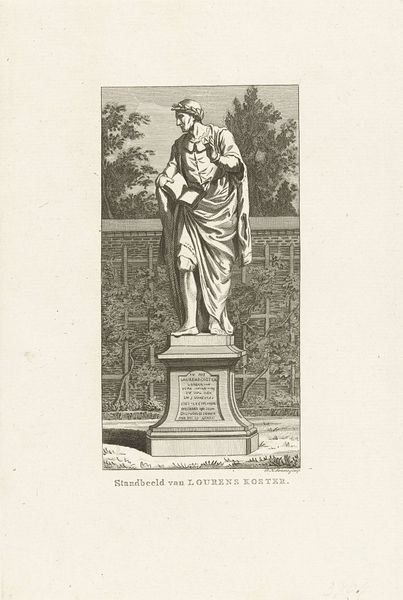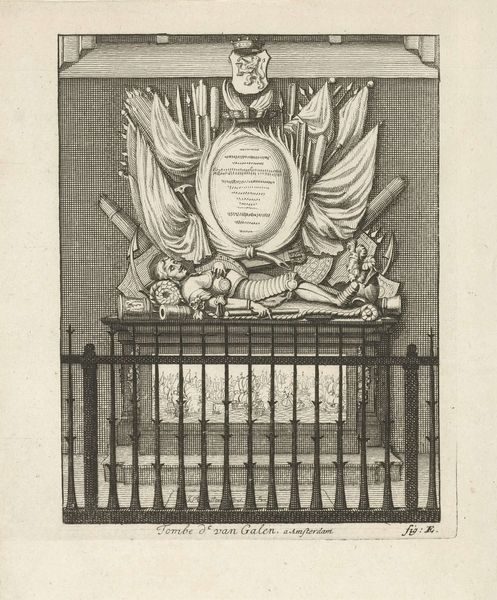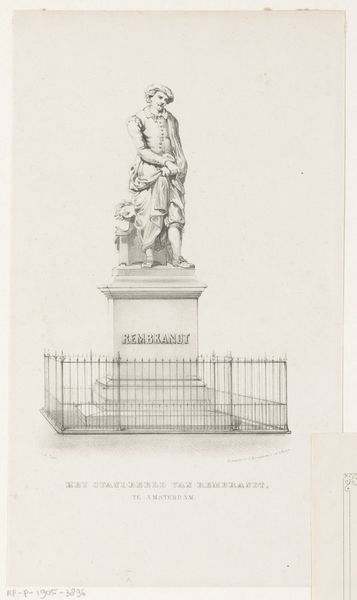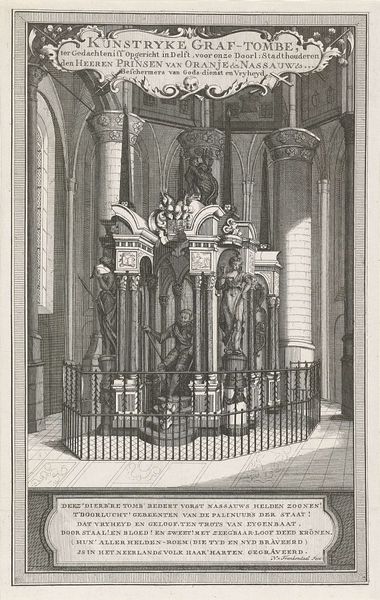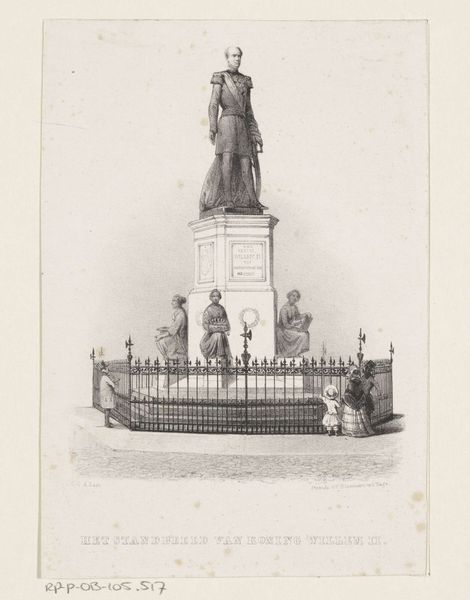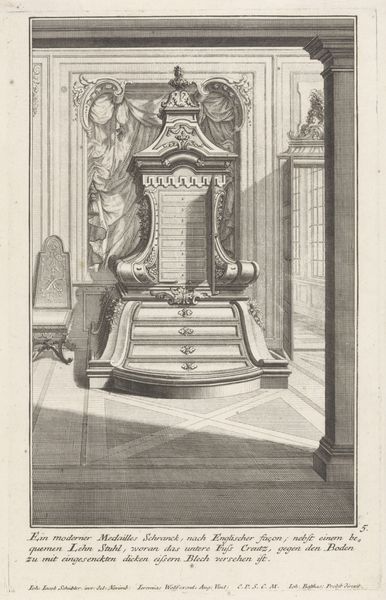
print, sculpture, engraving
#
portrait
#
neoclacissism
# print
#
sculpture
#
cityscape
#
engraving
#
realism
Dimensions: height 275 mm, width 189 mm
Copyright: Rijks Museum: Open Domain
Curator: Let’s turn our attention to a print depicting the statue of Jacob Cats. This engraving captures a neoclassical sculpture erected between 1829 and 1831. What’s your immediate impression? Editor: Hmm, detached, formal… Like peering into the past, but through a somewhat faded lens. The cityscape lurking faintly in the background adds to this ghostly impression. There's also an austerity here, it is definitely not a light-hearted presentation! Curator: I see what you mean. Jacob Cats, the figure memorialized here, was a renowned Dutch poet, jurist, and statesman. It's vital to remember that neo-classicism frequently uses visual language to emphasize the dignity of such notable figures. Editor: Right, he looks as though he's delivering a very solemn oration! Wrapped in a toga-esque robe, scroll in hand, positioned for authority. Do you suppose they selected a print over a painting in an effort to mimic stone? Curator: Intriguing point! Engravings, with their crisp lines, would emphasize the intended monumental nature. More symbolically, it becomes an intersection of public sculpture and printed reproduction - memory made widely available. Editor: So this engraving isn't just a picture, it's spreading the "Cats" message, I think you've got something here! Did this Jacob Cats have strong, unambiguous messages for his contemporaries? Curator: He certainly did. He's known for his didactic poetry. Think moralizing rhymes! A symbol that reminds folks about ethics, citizenship, and history - concepts they should always remember. Editor: And so, to summarize it, here's Jacob Cats forever captured and memorialized: poet, lawgiver, moral exemplar for the nation... He became a totem. It gives the figure great weight, I almost feel the social weight on his marble shoulders! Curator: Precisely, this portrait acts as more than just an image; it serves as an intersection between art, memorial, and societal aspiration. It is a perfect example of how public identity is created. Editor: Very good. Well, I confess I appreciate how a closer look reveals so much subtle stuff below the first, slightly stiff encounter!
Comments
No comments
Be the first to comment and join the conversation on the ultimate creative platform.
